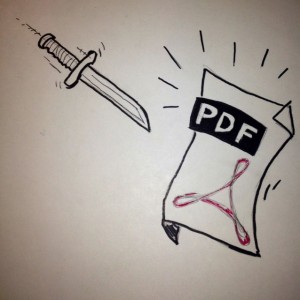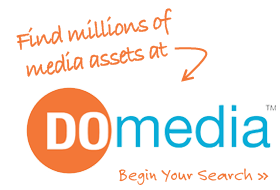 The conventional way to package together out-of-home opportunities has long been based on the PDF. PDFs are a great way for a vendor to maintain quality control over what their proposal is to a buyer. A pattern has emerged where most vendor submissions are a combination of a general media kit, a tailored PDF and a filled-out Excel grid. However simple these current standards seem, they are not able to keep pace with changing needs of the out-of-home industry. Data visualization demands are increasing, and it’s just the beginning. It may seem like a wild claim, but we are dealing with a digital buggy whip here.
The conventional way to package together out-of-home opportunities has long been based on the PDF. PDFs are a great way for a vendor to maintain quality control over what their proposal is to a buyer. A pattern has emerged where most vendor submissions are a combination of a general media kit, a tailored PDF and a filled-out Excel grid. However simple these current standards seem, they are not able to keep pace with changing needs of the out-of-home industry. Data visualization demands are increasing, and it’s just the beginning. It may seem like a wild claim, but we are dealing with a digital buggy whip here.Here are three reasons why PDFs will not be used in OOH RFPs within three years:
1. Sending and downloading large files isn’t fun
43% of the attachments vendors upload in the RFP are PDFs (Source: DOmedia Data September 2011 to Present). With the advent of cloud capabilities (Dropbox, Google Docs etc.) sharing and manipulating information in general has gotten easier, which is causing more frustration due to the rigid nature PDFs. Vendors spend time ZIP-ing things together, and buyers spend time un-ZIP-ing. On average, there are 2.4 attachments per OOH RFP (Source: DOmedia Data September 2011 to Present). To address this “give me the kitchen sink and I’ll figure out what works” mentality, DOmedia created a download all button that organizes all the attachments from all the seller for a single RFP.
2. Buyers were not meant to replace the scroll button on their mouse
With an average of 7.7 markets per RFP (Source: DOmedia Data September 2011 to Present), the length of an average PDF can get out of control. As long as the buyer wants to change absolutely nothing about a proposal, everything things works fine. Unfortunately, that’s very rarely the case. Buyer recommendations often include some level of manipulation of images and location lists before being presented to a client. If the client requires conversion of proposals into a PowerPoint for a pitch, then grab some coffee because it’s going to be a long night…
3. Pretty PDFs ‘‰ Great Client Reports
A common theme in out-of-home is that context matters. While a photo sheet tells the story of an individual location, clients need to see the big picture. Depending on the preference of the planner/buyer and the turnaround time, this ranges from a long menu of options to a very detailed and heavily manually crafted report. Ultimately, to efficiently create reports media buyers collectively must have a unified voice in the way they ask for information from vendors. Fortunately that is what DOmedia allows agencies to do!




